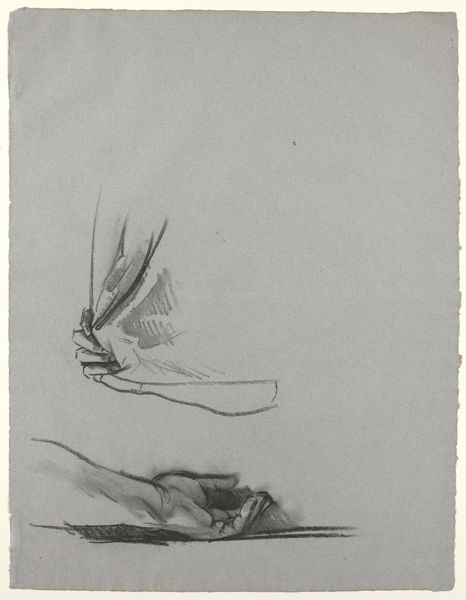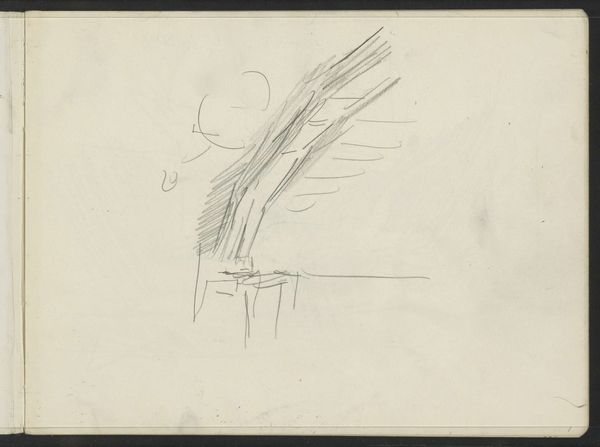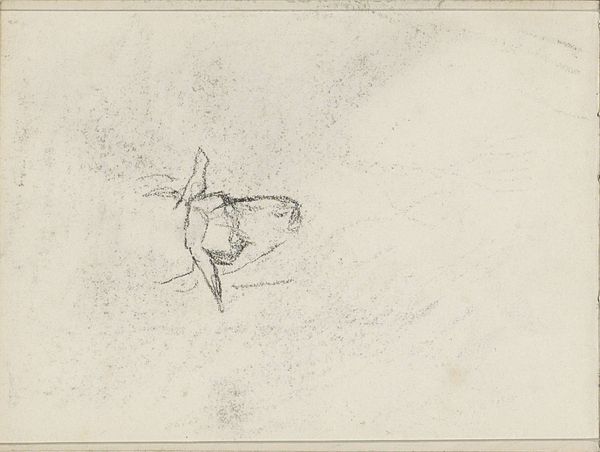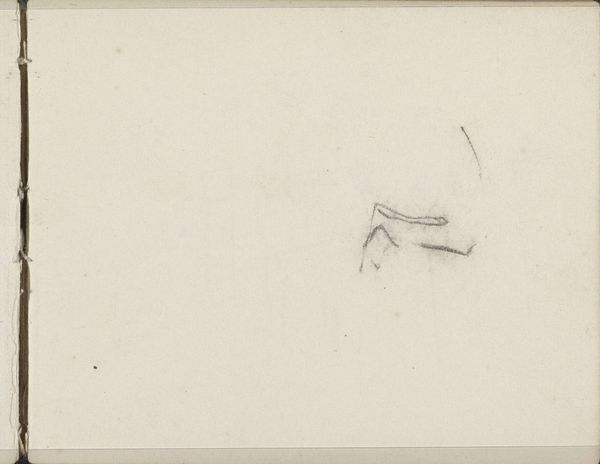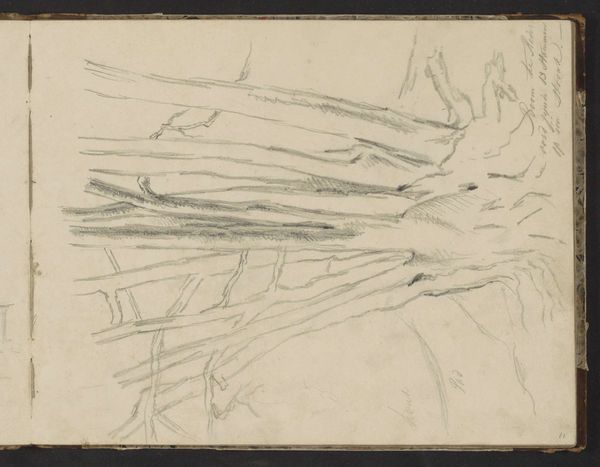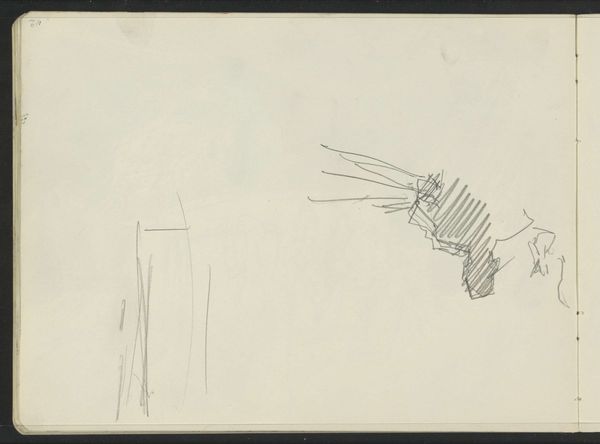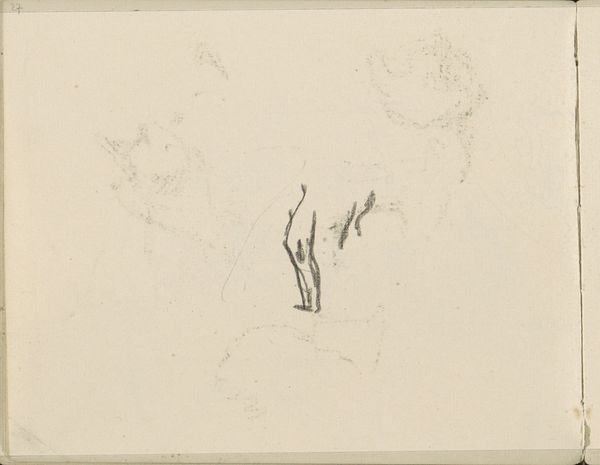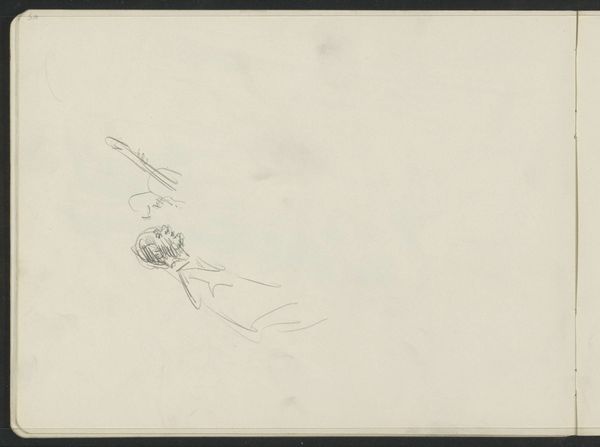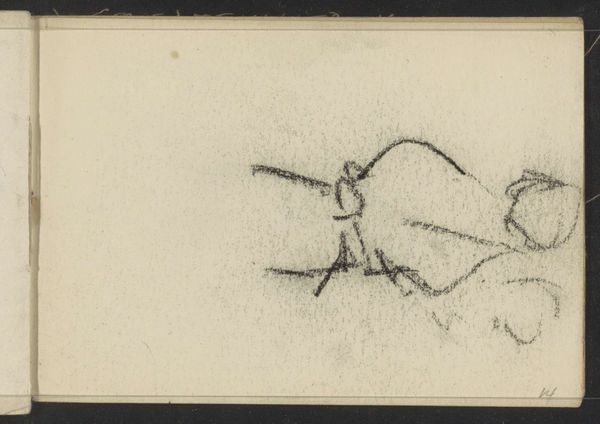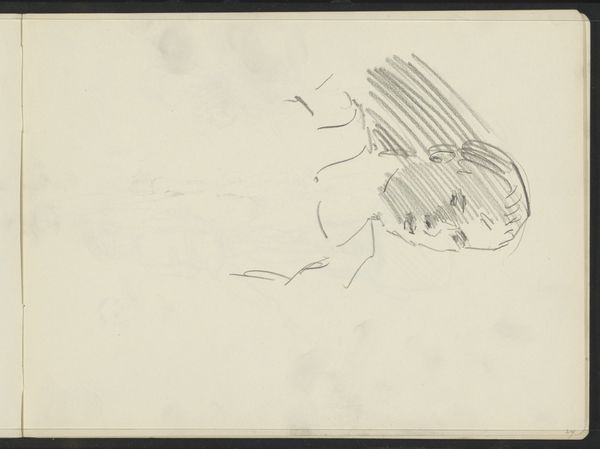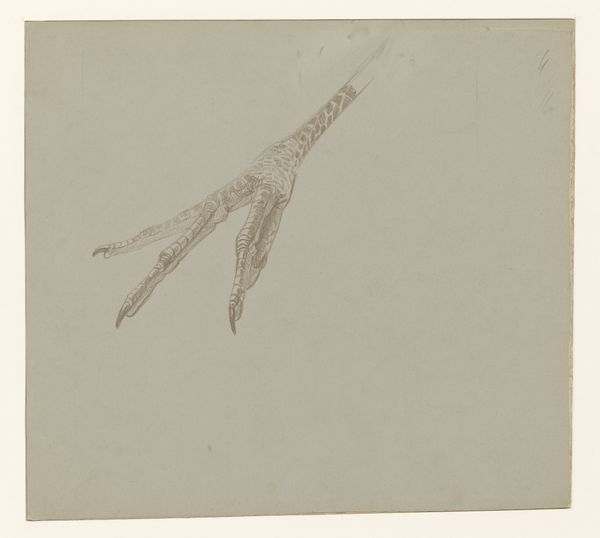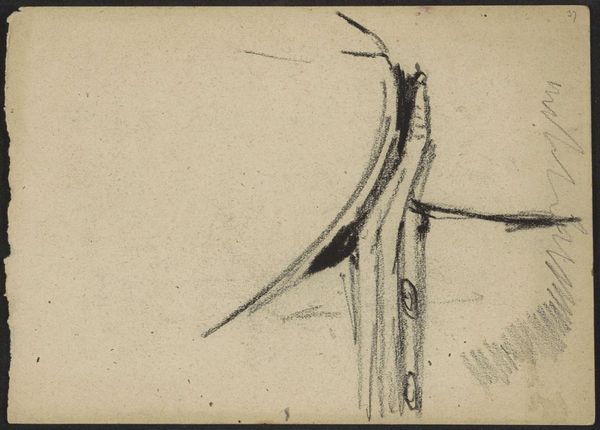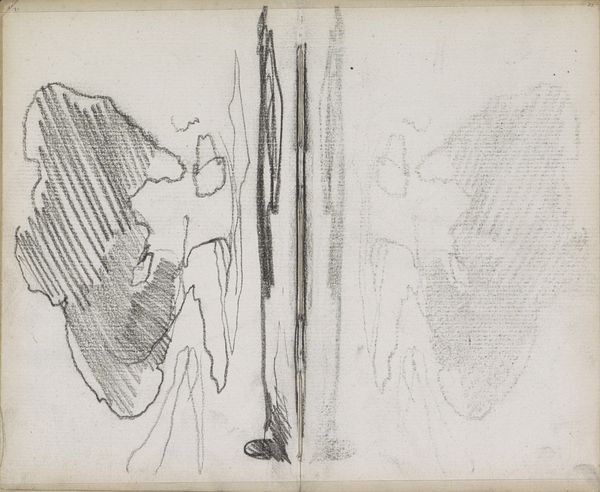
drawing, pencil
#
drawing
#
pencil sketch
#
figuration
#
form
#
pencil
#
academic-art
Copyright: Rijks Museum: Open Domain
Curator: Looking at this almost ephemeral sketch, what comes to mind? Editor: A sense of fleeting observation. A fragile rendering that could vanish at any moment. It feels quite raw. Curator: That rawness is typical of a preparatory study. This work by George Hendrik Breitner, from around 1881-1883, is titled "Study, Possibly of a Leg". He executed it with a simple pencil on paper. Editor: Interesting title! While it seems to represent a bone or limb, I'm wondering about the association of bones with mortality or what that part represents. Do we know what it relates to or what his larger artistic plan was? Is he depicting the body in a classical mode? Curator: There’s something deeply pragmatic in how Breitner approaches representation here. This piece embodies academic-art principles by prioritizing observation of natural form through rigorous analysis and imitation, but also moves past tradition through its visible use of drawing to convey shape, mass, and structure through clear lines and shading to understand not an allegory, but rather an interest in the objective world and what's materially available. We’re granted insight into Breitner’s thought process, his methods of constructing images through careful study of the world and form. Editor: But form can’t exist without content, right? I suppose one could consider the image, despite it not obviously relating to a narrative scene from history, mythology or a similar trope, it's function in the construction of meaning and visual codes; even what we might term an "objective" study inevitably invokes iconographic association, particularly, mortality given it concerns an anatomical fragment in some sense or another. There's an implication of something once living. The line is, indeed, fleeting. Curator: Agreed. Even the most stripped-down aesthetic choices tell a broader story. But my inclination is to view the focus less through those lenses and more as an index of a time where the act of observation and rendering was tied to the physical making and how that can reshape artistic value away from traditional iconographic concerns. Editor: It all leaves one considering what is being constructed, deconstructed, represented, and ultimately what is communicated, even by such a rudimentary sketch. Curator: Absolutely, and with any luck our audience now has their own perspectives percolating as well. Editor: I certainly hope so! Art history always welcomes multiple perspectives.
Comments
No comments
Be the first to comment and join the conversation on the ultimate creative platform.
